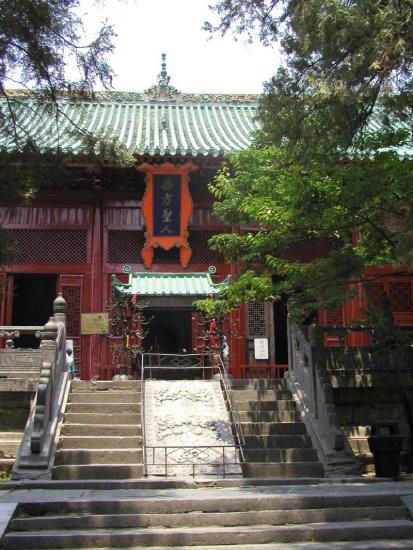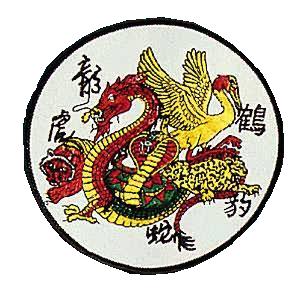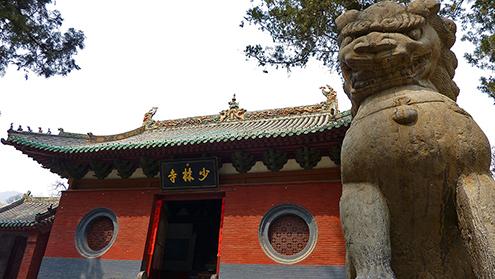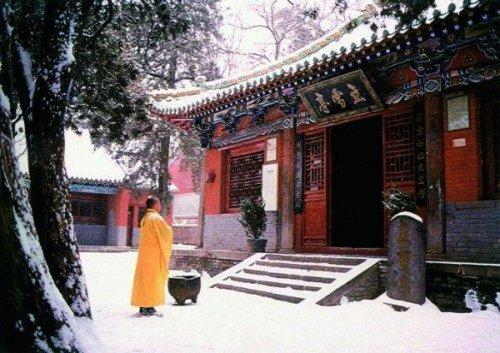Where did Kempo start?
Due to the scarcity of authentic written records, the exact origin of the Martial Arts is obscure. Most historians agree some form of Martial Arts was practiced in China as early as 1000 B.C. To speak of all Martial Arts history would take volumes to tell. Therefore, the following is as accurate accounting of Kempo lineage as we can document.
Our most reliable information comes to us from Buddhist inspired Martial Arts such as those practiced at the Shaolin Temples. Records indicate that Bodhidharma, an Indian priest, traveled from India to China sometime around 525 A.D. His purpose was to transmit the discipline of Zen to China and integrate those ideas with the existing Buddhist Doctrines.
Bodhidharma was the 28th. descendant of the original Buddha. He bacame Abbot of the Shaolin Temple in Henan province shortly after his arrival in China. Legend tells us that when he arrived at the Temple, he found the monks to be in a state of physical decay and unable to withstand the prolonged periods of meditation, which were essential to the practice of Zen Buddhism. In an attempt to improve the physical condition of the monks, he instituted a series of 18 exercises similar in nature to Hatha Yoga. The exact nature of the "18 Hands of the Lo Han," as the exercises were called is unknown. We do know, however, they constituted of breathing, stretching, bending, and reaching. These exercises apparently were the catalyst for the creation of other physical disciplines used to further the spiritual development of the Zen Buddhists. Prior to Bodhidharma's arrival, meditation was practiced as a purely mental discipline. Afterwards, it became much more succesful as a combination of physical and mental disciplines, keeping with the doctrine of Yin and Yang. In any event, the next appreciable contribution occurred in the 18th. century, when a Shaolin monk called Ch'ueh Vuen expanded the original 18 exercises to 72 and began practicing them as a self-defense art. Later he left the temple and traveled extensively throughout China in search of other Martial Arts masters to confer with them. Ch'ueh Vuen probably obtained techniques and ideas from many different sources. We know that he met two masters, one named Fong and another named Li Shao. Together, the three men returned to the Shaolin Temple and expanded the 72 movements into 170 and categorized them into five distinct styles: Hence, the five animal system still practiced today, Tiger, Crane, Leopard, Dragon, and Serpent. These five styles formed the basis of the art of Shaolin Ch'uan Fa, also known as the "Five Forms Fist."




Skipping ahead, the Shaolin fighting arts were practiced in utmost secrecy largely due to the Masters fear that the techniques would fall into hands that would use the potentially deadly art for purposes other than what was originally intended. Many factors led to the spread of the Martial Arts, such Buddhist missionaries to Japan, Korea, and Indonesia, or Shaolin students who left the temple prematurely and passed the knowledge they had on to others. But the main factor was the ruthless domination of the Manchu Emperor. Secret societies were formed for the purpose of restoring the Ming Dynasty to power and overthrowing the Barbarian Manchu.
Throughout the following years, many changes, adaptations, and influences took place. Japanese influence came with the influence of James Mitose. Chinese, with the influence of William Chow. Although Chow, a student also of Mitose, who learned the Chinese ancestral art of Five Animal Kung Fu from his Chinese father which had been passed down from Bodhidharma, was responsible for never letting the Chinese lineage go. At this point in time, Kempo, or Kenpo, diversified in many directions. One was American Kenpo, with Edmund Parker, who trained a young man named Thomas Connor. Master Connor began training in the Wing Chun and Hung Gar schools located in Newark, New Jersey. After years of training, he enlisted in the military and eventually became an operative in Central America and Mexico. Over the next few years, Master Connor formed several partnerships, to include a partnership with the Tracy Brothers. He immediately began exploring the true circular motions, found in the Chinese Martial Arts, as opposed to the linear movements found in most other styles. A young man by the name of Bill Packer, became an avid student of Master Connor. The two later studied extensively their art, and compared aspects of it to the early Chinese art and returned to the true aspects of the Chinese system. Master Packer later took this training a step farther by bringing in a notable professor of Chinese Philosophy to teach Master Packer's instructor's the Chinese Philosophy of Martial Arts. Thanks largely to him, the Chinese influence returned full force. This is where we gain the Chinese basis to continue the art of Chinese Kempo.
What is Ch'uan-Fa Shorei Karate-Do?
So what is "Ch'uan-Fa Shorei Karate-Do?" Developed by Grand Master James Mattocks under the tutelage of Grand Master Packer's teachings and Grand Master Michael Branden's mentoring, it is the system taught today at United Kempo Karate Schools and several schools on the East Coast. It is a combination of the Chinese Kempo Martial Arts, along with Combat Fighting style tactics, and an Okinawan influence of weaponry. The basis is strongly held in Chinese Kempo tradition.